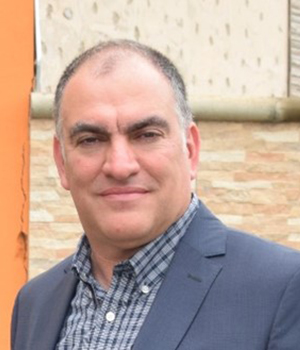Back to program
Mining Reclamation by Governments in Quebec and Elsewhere
Wednesday, November 20, 2024
Room 302AB - BGC Engineering
During this session we will address the issues encountered by different government entities (provincial, federal and abroad) to reduce the risks of mining liabilities from abandoned mine sites. The emphasis will be placed on carrying out the rehabilitation and reclamation work necessary to restore the sites in a responsible and sustainable manner, taking into account the perspectives and considerations of neighbouring communities for land use.
This session will be offered in French and in English.
1:30 p.m.
Welcome Address
2:10 p.m.
Rehabilitation of Sand and Gravel Pits on Public Land in Quebec
Conference details
The Ministère des Ressources naturelles et des Forêts (MRNF) issues mining leases under the Mining Act. When either the resource is depleted or mining operations cease, the current environmental framework provides for the reclamation and rehabilitation of the sand pit by the holder of the environmental authorization. The Directorate of Development and Control of Mining Activity (DDCAM) is responsible for the reclamation of sand pits under the responsibility of the government.
The DDCAM has estimated that approximately 450 sandpits on public land have been inactive for over a decade and require restoration. This number can be augmented by sand pits whose resources have been depleted or those that have exceeded the limits permitted under their environmental authorization. A significant proportion of the inactive sandpits have residual material disposal issues and necessitate redevelopment and rehabilitation work.
In autumn 2020, the Government of Québec announced a budget of $10 million for the development of public lands through the reclamation of sand and gravel pits.
Following this measure, the MRNF implemented a 2021-2023 financial assistance program designed to support the development of public lands. The program's normative framework allows for financial assistance to be provided to eligible applicants (municipalities, RCMs, indigenous communities) who request it.
In May 2022, the MRNF opted to act as project owner through a contractual management process in order to accelerate the rehabilitation of sand pits in the public domain.
Aerial images captured using drones operated by the MRNF's Service de la gestion des droits miniers will showcase the restoration work conducted by the MRNF and financial assistance applicants across various regions in Quebec. The techniques employed and the challenges encountered in the rehabilitation of wetlands will also be discussed.
2:30 p.m.
Post-mining Management in France
Conference details
France has a long experience in post-mining management, with a national program coordinated and founded by the State. Under the French mining code, once mining activity has ceased, responsibility for monitoring residual risks (subsidence, gas emission) and managing of hydraulic safety installations is transferred to the State. Once mining operations have ended, the operator remains liable for any material damage caused by their activity. When the site is orphaned (operator missing or insolvent), these damages have to be managed and financed by the State. The mining and post-mining management are carried out by the Regional Services for the Environment of the Ministry of Environment under the authority of the prefects (the regional representative of the State).
This general framework is complemented by:
- GEODERIS: a public interest group formed in 2001 that provides expertise and technical assistance (includes 22 professionals with mining expertise)
- DPSM: an operational post-mining department at the French Geological Survey (BRGM) that monitors, rehabilitates and carries out safety works (90 people)
- BGRM and Ineris: public agencies that provide additional expertise and research capacity to the French State and to GEODERIS.
The budget to finance post-mining expertise and operational management in France is around €40MM per year.
The objective of this presentation is to bring an overview of the French legal framework and of BRGM’s main post-mining activities. These activities include environmental studies and assessments, rehabilitation of tailings and waste rocks (covers, phytoremediation, etc.), management of water treatment stations, subsidence and geotechnical management (adits, shafts, underground mining voids), data management, etc. Some case studies will be used to illustrate specific aspects of the post-mining management. In parallel, the BRGM’s research activities supporting these actions will be presented (phytoremediation, teledetection, etc.) and some perspectives will be discussed (mining waste valorization, climate change, etc.).
3:00 p.m.
Project Planning for the Closure of the Legacy Giant Mine
Conference details
The Giant Mine is an abandoned gold mine in the Northwest Territories, 5 km north of the City of Yellowknife. This site is located on Chief Drygeese Territory. From time immemorial, it has been and is the traditional land of the Yellowknives Dene First Nation. It is also within Môwhì Gogha Dè Nîîtåèè of the Tłı̨chǫ government and on the traditional homelands of the Indigenous Metis of the North Slave Métis Alliance. Giant Mine has a large footprint, approximately 1,600 hectares, and includes eight open pits, four tailing ponds behind 12 dams, 237,000 tonnes of arsenic trioxide dust stored in 14 chambers and stopes, extensive underground workings, over one million cubic metres of contaminated soils, and approximately 100 buildings with many surface and groundwater concerns and issues, as well as an effluent treatment plant. Crown Indigenous Relations and Northern Affairs Canada (CIRNAC) received a water licence and land-use permit in 2020 to proceed with the implementation of the closure and reclamation plan. This presentation describes the site’s key issues, closure criteria and objectives, the closure plan, and the 15-year project implementation plan.
3:40 p.m.
End of the session






